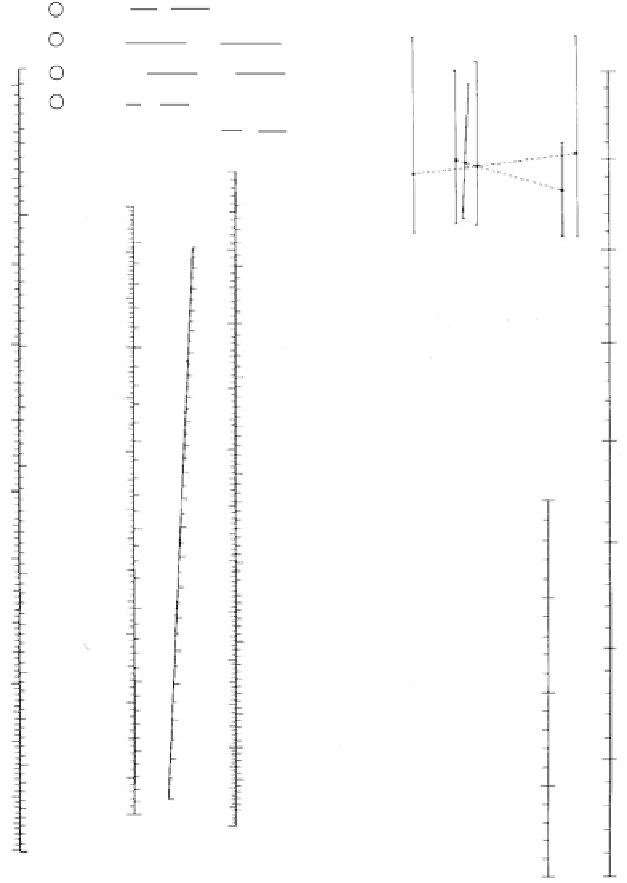Environmental Engineering Reference
In-Depth Information
EXAMPLE
Given :
wef
= 123.6 lbs./ ft.
3
G
s
= 2.625
= 20.0%
wet
1
+
123.6
1
+
0.20
103.0 lbs./ft.
3
=
=
1
Find:
d
=
Find:
e
=
wet
ω
(
G
s
) (62.4)
d
d
62.4 (G
s
)
(2.65) (62.4)
103.0
2
−
1
=
−
1 = 0.605
d
e n
sgt
103.0
62.4 (265)
80
2
n
= 1
−
45
=
1
−
=
.377 or 37.7%
1.3
sat =
0.605
2.65
.228 or 22.8%
Degree of saturation:
S
=
e
G
s
=
2
=
sat
.200
.228
=
= .877 or 87.7%
G
s
1
40
1.0
2
1.4
1.3
90
%
55%
35
1.1
1.2
1.5
70
1.1
1.2
30
1.6
100
50
1.0
40
38
80
1.3
36
0.9
1.7
34
25
45
32
1.4
0.8
110
30
90
1.8
28
2.55
0.7
1.5
26
40
20
24
1.9
1.6
100
0.6
120
22
2.60
35
1.7
20
2.0
0.5
110
15
18
1.8
130
30
2.1
16
2.65
0.4
1.9
120
14
2.2
2.0
25
10
12
140
0.3
130
2.70
2.1
2.3
10
20
2.2
2.4
150
5
2.75
FIGURE 3.2
Nomograph to determine basic soil properties. (From USBR,
Earth Manual,
U. S. Burean of Reclamation,
Denver, CO, 1974. With permission.)
Significance
or, more commonly, to classify
in situ
density as follows: very loose (0-15%), loose
(15-35%), medium dense (35-65%), dense (65-85%), and very dense (85-100%) (see
Table 3.23
for correlations with
N
values of the Standard Penetration Test (SPT)). Void
ratio and unit weight are directly related to
D
R
and gradation characteristics.
Permeability, strength, and compressibility are also related directly to
D
R
and gradation
characteristics.




